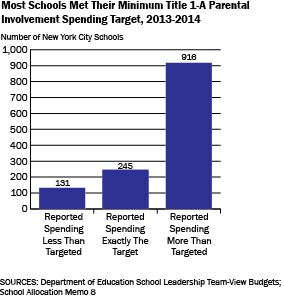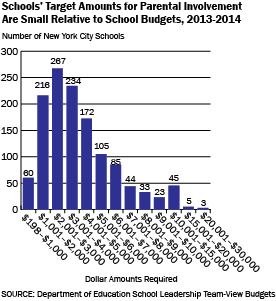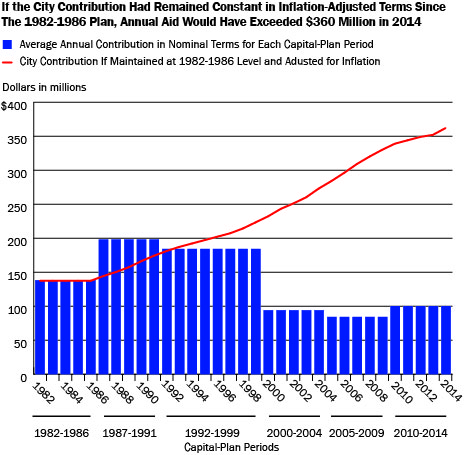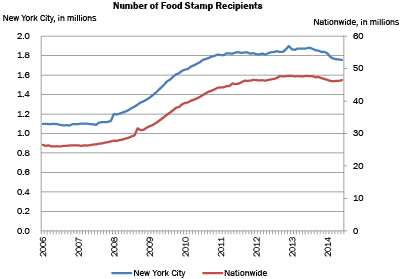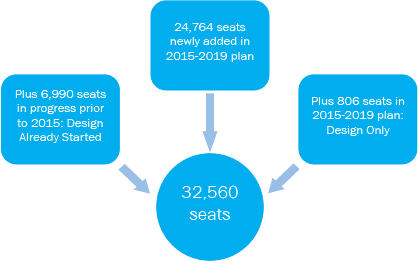Federal Title I-A funds provide assistance to schools and local educational agencies (in New York City, the Department of Education) that serve a large number or share of students from low-income families. Under federal rules, school systems that receive at least $500,000 in Title I-A funds must use at least 1 percent of their annual allocation for activities that promote parental involvement. Title 1-A requires parental input into determining the activities provided as well as their implementation. Although schools also use additional sources to fund parental involvement, only Title 1-A requires that parents be involved in planning for the use of these funds.
- In school year 2013-2014, 1,292 schools (nearly 79 percent) of the city’s public schools received Title 1-A funds.
- Schools receiving Title I-A funds collectively spent $11.2 million on parental involvement activities in 2013-2014—more than double the required minimum expenditure of $5.2 million for the Department of Education.
- The education department gives schools a targeted amount of 1 percent of their Title 1-A funds to spend on parental involvement in the department’s school budget allocations.
- In school year 2013-2014, 10 percent of Title 1-A schools with parental involvement spending targets self-reported spending below the amount targeted and nearly 71 percent reported spending more than their assigned target amount.
- Nearly 70 percent of schools receiving Title I-A funds were targeted to spend between $1,000 and $5,000 for parental involvement.
- For schools spending in this range, the expected expenditure equaled about 0.1-0.2 percent of an average school budget.
- Lack of standardized reporting limits analysis by type of expenditure.
Prepared by Liza Pappas & Yolanda Smith
New York City Independent Budget Office
Print version available here.
| New York City By The Numbers |
